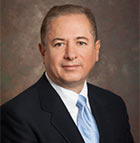Dec
16

Date: 16 December 2024
Time: 10:00 AM ET (New York Time)
Speaker(s): Dr Gonzalo Arce
This webinar is the next in a series by the IEEE Synthetic Aperture Technical Working Group (SA-TWG)
Abstract
Lidar is a technology of utmost importance in numerous applications including autonomous guidance and 3D sensing of Earth. Lidar sensing is limited by photon attenuation of the atmosphere and by isotropic surface reflection. The photon density collected at the sensor decreases rapidly with the distance, thus the altitude of the lidar has a huge impact on the attainable image quality and resolution. Airborne lidars operating at low altitudes (350-meters) provide sub-meter resolution 3D point clouds with wall-to-wall coverage. On the other hand, spaceborne lidars such as NASA's GEDI and ICESat-2, operating at 400 km, provide low-resolution photon-starved 1D line scans of Earth. Furthermore, satellite lidars do not record 3D point clouds but instead capture large footprints (10-20 meters) that describe the underlying 3D structure.
This talk describes a radically different computational sensing and reconstruction approach to lidar imaging at very high-altitude coined here as compressive lidar (CS lidar). Rather than measuring 1D line footprints over a lidar’s swath path as is the norm today with satellite lidars, CS lidar adopts sparse coded laser illumination over a 2D wide field-of-view. The objective is to compressively sense Earth from hundreds of km above Earth to then computationally reconstruct the 3D imagery with resolution and coverage, as if the data was collected from just hundreds of meters in height. The forward imaging model captures the light propagation phenomena affecting the photon pulses transmitted from the sensor to the Earth’s surface and back. The inverse problem is then cast as a compressive sensing problem with an extreme compression ratio. Deep learning and generative models are then proposed to reconstruct 3D imaging of landscapes on Earth with drastically improved resolution and wide field-of-view. CS lidar imaging can offer opportunities for aircraft (20 km) and drone (10-15 km) surveillance and reconnaissance applications.
Biography
 Gonzalo Arce Dr. Gonzalo Arce’s expertise lies in the fields of computational imaging, signal processing on graphs, and machine learning. His research is interdisciplinary, drawing from the theories of mathematics, optics, statistics, and artificial intelligence. Dr. Arce’s primary research areas encompass computational compressive lidar, compressive sensing for spectral imaging, spectral X-Ray tomography, generative machine learning for inverse problems, and hypergraph neural networks. He applies his research to various domains, including biomedicine, Earth science, complex systems, and lithography. Dr. Arce is an active member of the Institute of Financial Services Analytics (IFSAN) and the Data Science Institute, both at the University of Delaware. Dr. Arce has twice held the Nokia-Fulbright Distinguished Chair in Information and Communications Technologies in Helsinki, Finland. He has received numerous prestigious recognitions, including being a Fellow of the National Academy of Inventors, Life Fellow of the IEEE, Fellow of SPIE, Fellow of the AAIA, and Fellow of OPTICA. He is the incoming Editor-in Chief of the IEEE Transactions on Computational Imaging.
Gonzalo Arce Dr. Gonzalo Arce’s expertise lies in the fields of computational imaging, signal processing on graphs, and machine learning. His research is interdisciplinary, drawing from the theories of mathematics, optics, statistics, and artificial intelligence. Dr. Arce’s primary research areas encompass computational compressive lidar, compressive sensing for spectral imaging, spectral X-Ray tomography, generative machine learning for inverse problems, and hypergraph neural networks. He applies his research to various domains, including biomedicine, Earth science, complex systems, and lithography. Dr. Arce is an active member of the Institute of Financial Services Analytics (IFSAN) and the Data Science Institute, both at the University of Delaware. Dr. Arce has twice held the Nokia-Fulbright Distinguished Chair in Information and Communications Technologies in Helsinki, Finland. He has received numerous prestigious recognitions, including being a Fellow of the National Academy of Inventors, Life Fellow of the IEEE, Fellow of SPIE, Fellow of the AAIA, and Fellow of OPTICA. He is the incoming Editor-in Chief of the IEEE Transactions on Computational Imaging.
